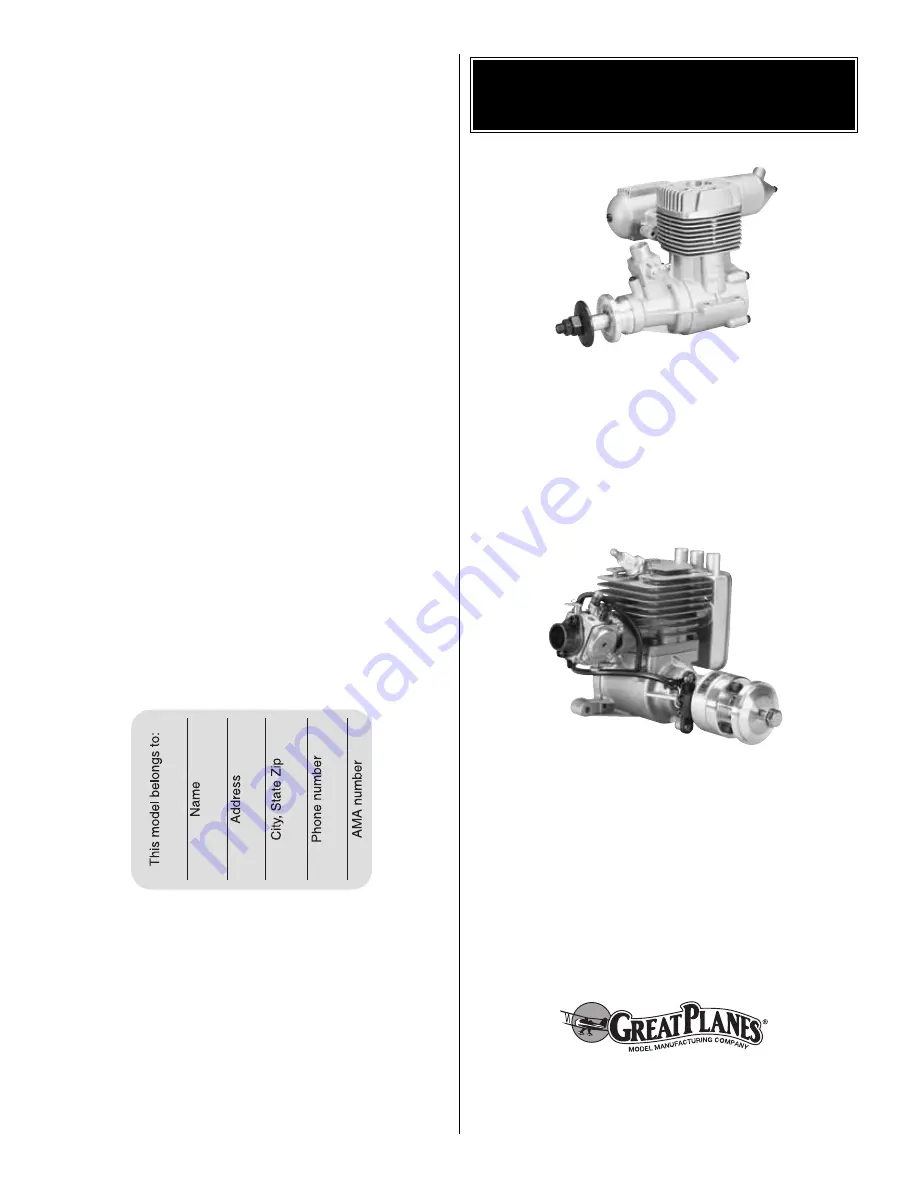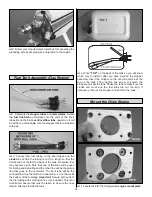
the runway (into the wind) keeping the nose down to
maintain airspeed and control. Level the attitude when the
model reaches the runway threshold, modulating the throttle
as necessary to maintain your glide path and airspeed. If
you are going to overshoot, smoothly advance the throttle
(always ready on the right rudder to counteract torque) and
climb out to make another attempt. When you’re ready to
make your landing flare and the model is a foot or so off the
deck, smoothly increase up elevator until it gently touches
down. Once the model is on the runway and has lost flying
speed, hold up elevator to place the tail on the ground,
regaining tail wheel control.
One final note about flying your model. Have a goal or flight
plan in mind for every flight. This can be learning a new
maneuver(s), improving a maneuver(s) you already know, or
learning how the model behaves in certain conditions (such
as on high or low rates). This is not necessarily to improve
your skills
(though it is never a bad idea!), but more
importantly so you do not surprise yourself by impulsively
attempting a maneuver and suddenly finding that you’ve run
out of time, altitude or airspeed. Every maneuver should be
deliberate, not impulsive. For example, if you’re going to do
a loop, check your altitude, mind the wind direction
(anticipating rudder corrections that will be required to
maintain heading), remember to throttle back at the top, and
make certain you are on the desired rates (high/low rates).
A flight plan greatly reduces the chances of crashing your
model just because of poor planning and impulsive moves.
Remember to think.
Have a ball! But always stay in control and fly in a
safe manner.
GOOD LUCK AND GREAT FLYING!
Make a copy of this identification tag and put it on or
inside your model.
O.S.
®
BGX-1 3500 Glow Engine
The side-exhaust BGX-1 3500 not only produces more
power than a popular 41cc gasoline engine, but weighs well
over a pound less! A low-profile design simplifies mounting
and increases the chances for completely in-cowl
installations. Features include a remote high-speed needle
valve, dual bearings and durable ringed piston design.
Includes a muffler, mount, glow plug and safety prop nut
assembly. OSMG0352
Fuji-Imvac
™
BT-43EI Gasoline Engine
The Fuji-Imvac EIS (Electronic Ignition System) has few
equals in starting ease or in maximizing power, and it’s
available in the large-scale BT-43EI. This engine gives pilots
a powerful (4.2 hp) alternative to 1.60 glow engines, and fits
anywhere a 1.60 would. EI starting ease is not the only other
plus the BT-43EI offers. Gasoline engine simplicity and
economy are right up there, too, as well as a generous
3-year warranty. FJIG0143
Fuji-Imvac is not related to the original Fuji Engines sold by Mecoa.
OTHER ITEMS AVAILABLE FROM
GREAT PLANES

































